Folding Boat Equipment (FBE) was a pre-war bridging system designed to provide a lightweight and flexible means of crossing wide wet gaps that continued in service until the sixties.
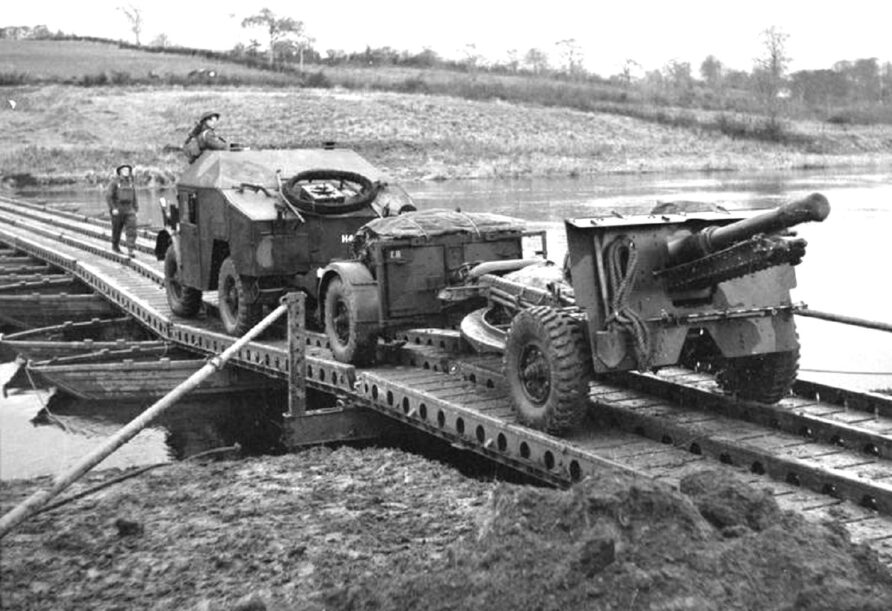
Folding Boat Equipment (FBE) was the name given to a portable bridging system that could be used as a floating bridge, a raft, a ferry or a general-purpose boat. Introduced in the late twenties.
The FBE was continually developed and remained in service throughout WWII.
Having seen service in all theatres, it played an especially vital role alongside Bailey Bridges in the liberation of Europe. The history of British military bridging is awash with success stories and innovation, yet the Folding Boat Equipment is perhaps one of the most successful that very few have ever heard of.
Folding Boat Equipment (FBE) Mark I and Mark II
The Royal Engineers accepted Folding Boat Equipment (FBE) Mark I into service in 1928 to provide a quick means of building wet gap crossing capability for personnel and vehicles up to 5 long tons.
The Bridge Class system was not introduced until the late thirties, so it is technically incorrect to refer to these early iterations as a Class 5 bridge. Folding Boat Equipment (FBE) was designed to provide a crossing capability that, whilst limited in capacity, was much faster to build than larger and more conventional pontoon bridges available at the time.
Each boat was 21’11 (ca. 7 m)” long, 6′ 8 (ca. 2 m)” across the beam, and when unfolded and braced, 2’11 (0.89 m)” inches high. Each also weighed 940lb (ca. 426 kg) or 426 kg. When used as a boat, the Folding Boat Equipment (FBE) Mark I or II could carry 16 men in addition to a crew of 4, or a total of 30 in calm conditions.
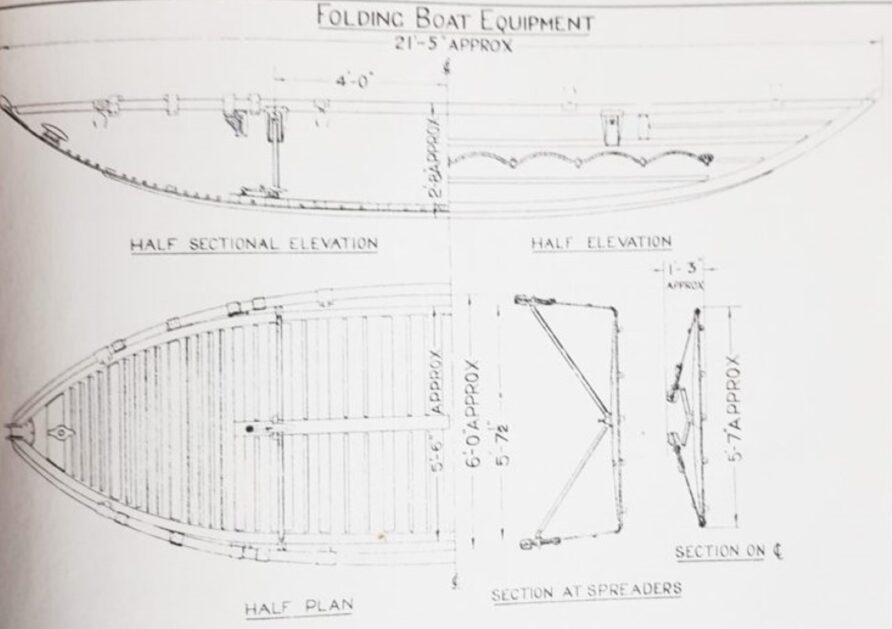
The boat consisted of three half-inch thick plywood panels connected with a continuous waxed canvas ‘hinge’ such that in storage, they could be folded flat.
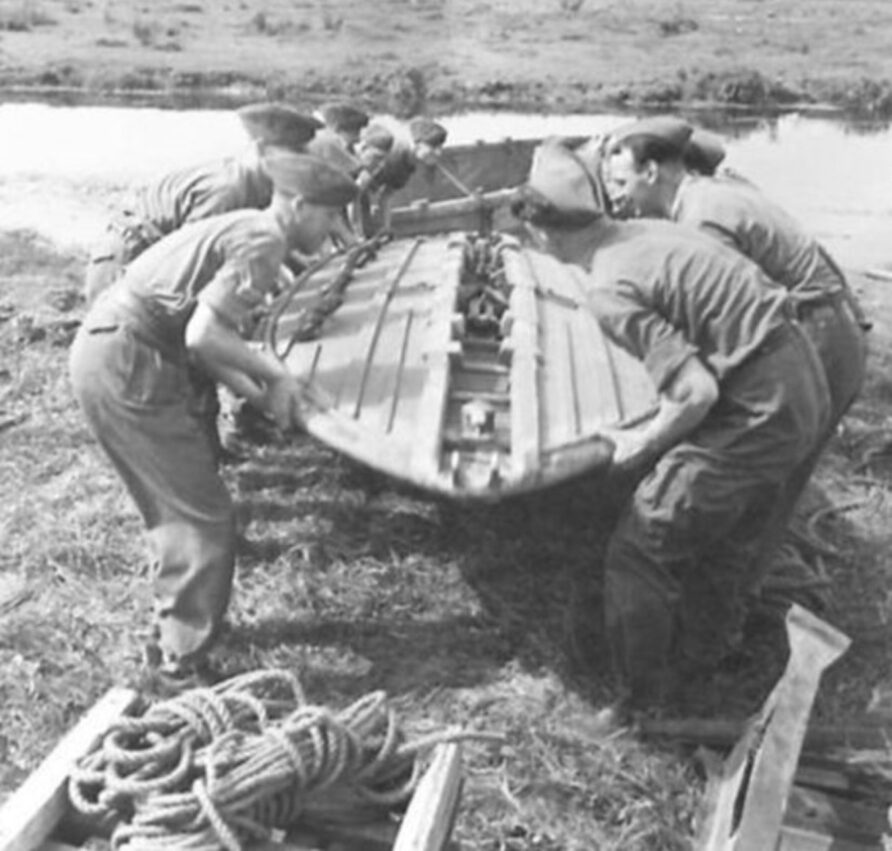
With the sides pulled up and spreaders braced, the boat became a rigid structure.
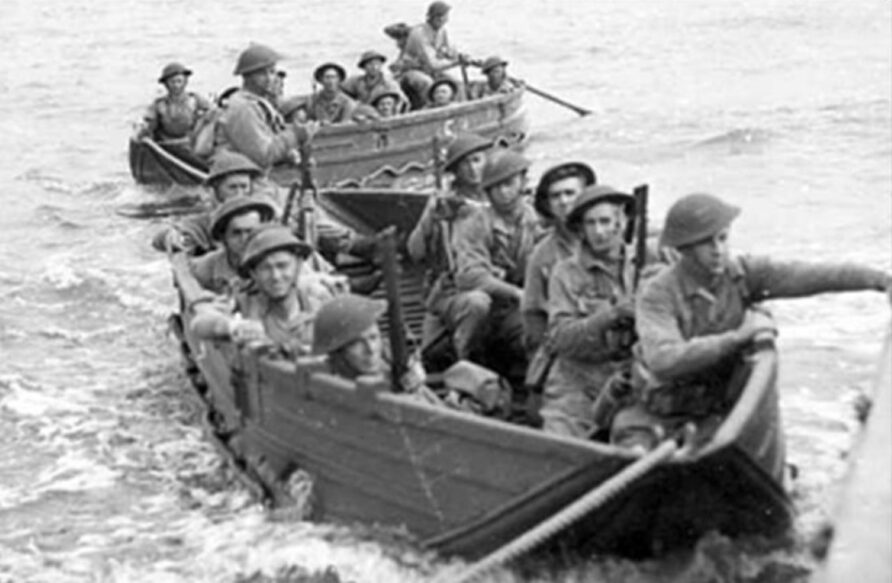
Usually propelled using oars, a Coventry outboard motor on an outrigger frame was also available
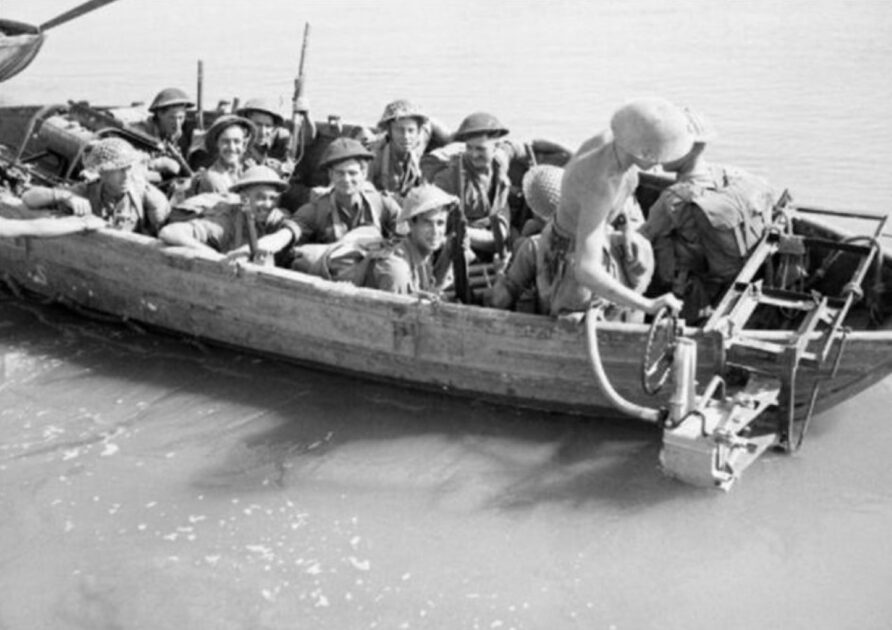
Additional equipment was added to create two types of rafts or floating bridges, the image below, taken at Wyke Regis, shows a Mk II FBE with Mk5 Heavy Trestles, demonstrating the interchangeability and flexibility of the design.
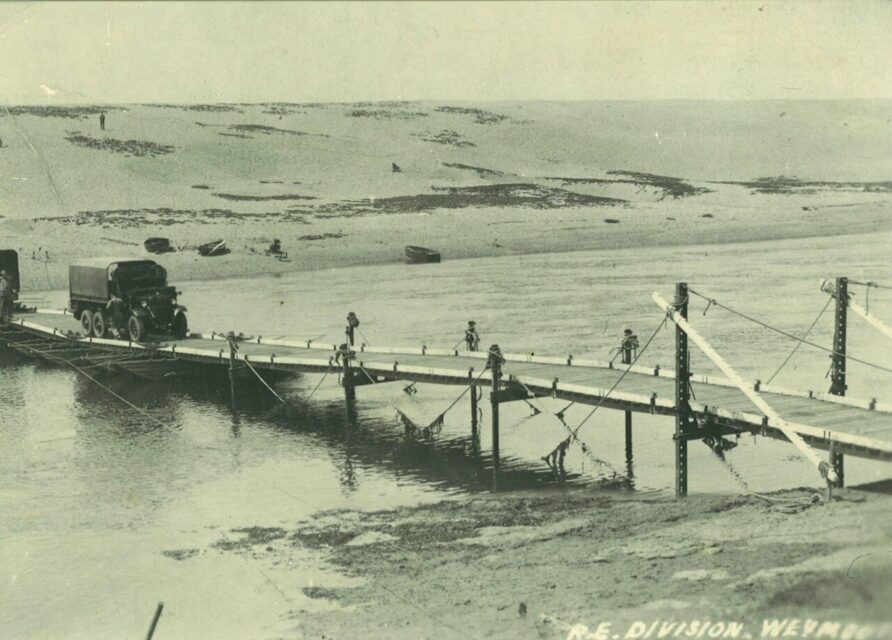
The video below is from 1940.
Folding Boat Equipment (FBE) Mark I and Mark II Rafts
Tracked Raft
The 3-ton capacity Tracked Raft was formed of two boats, connected by two wooden transoms laid across the full beam of the boats.
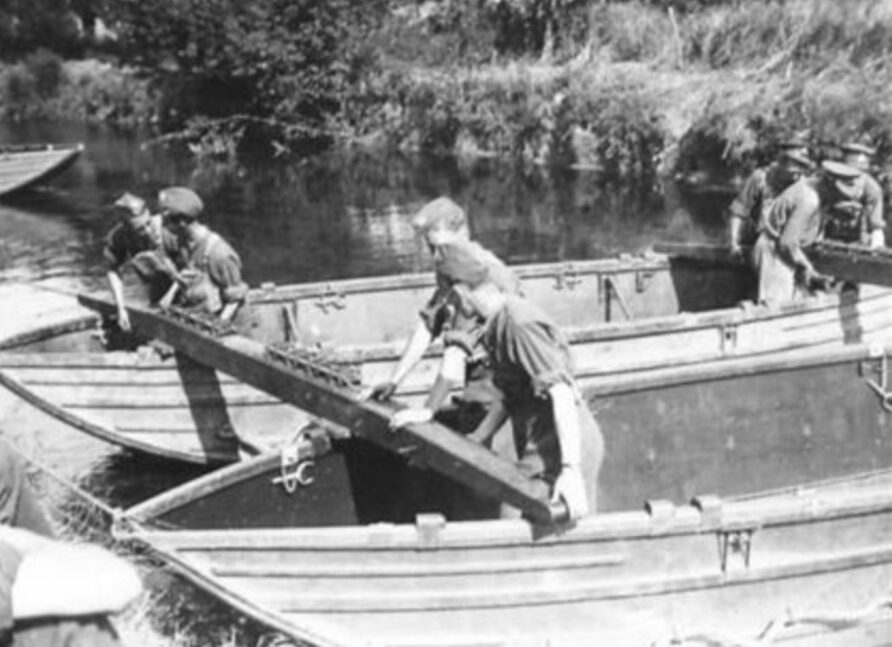
Two 14-foot-long trackways were attached to the transoms to create a vehicle deck.
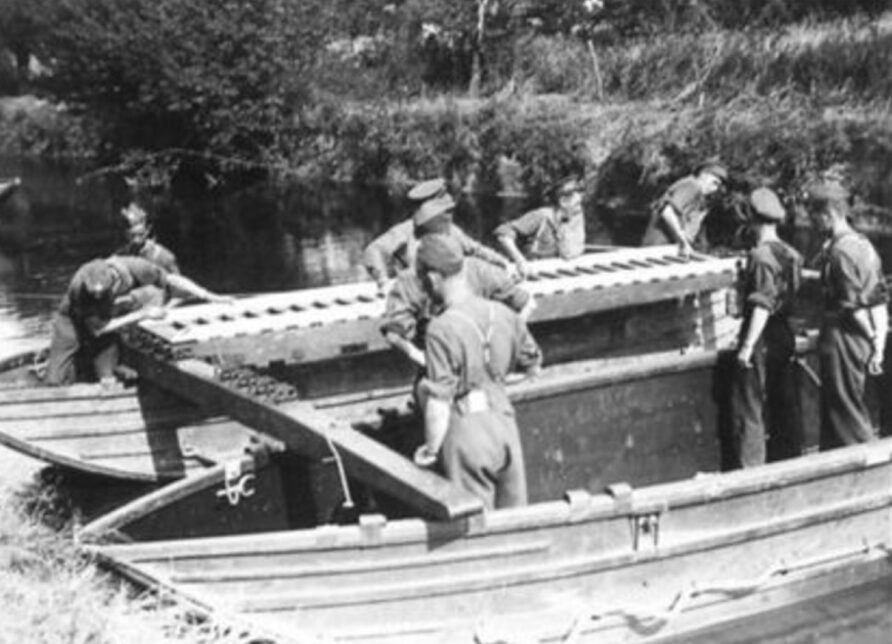
9 foot-long ramps were attached fore and aft to allow a vehicle to drive on and drive off.
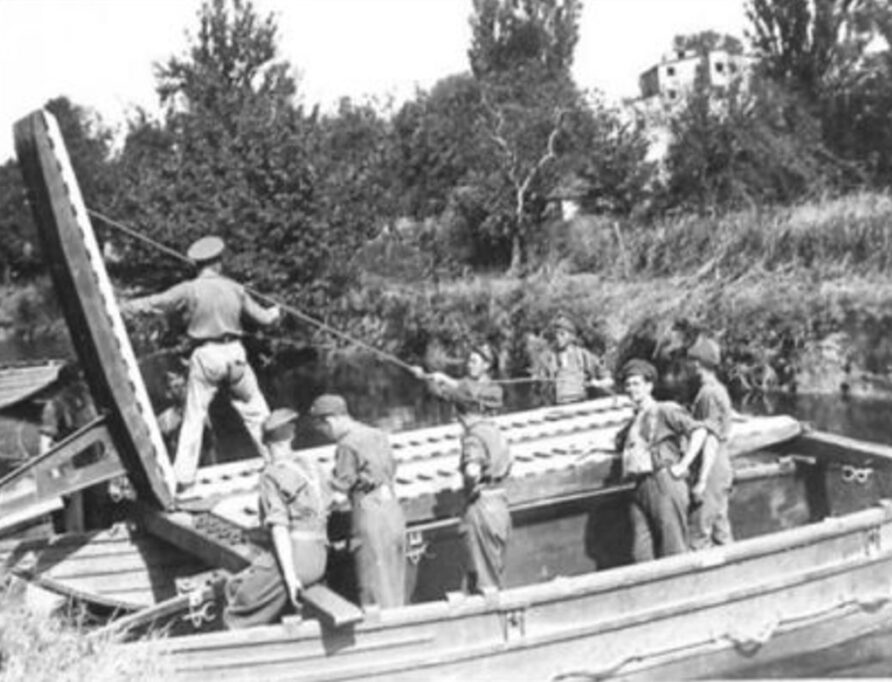
The raft could be propelled by oars or outboard, or used as a ferry with a fixed line between the two banks.
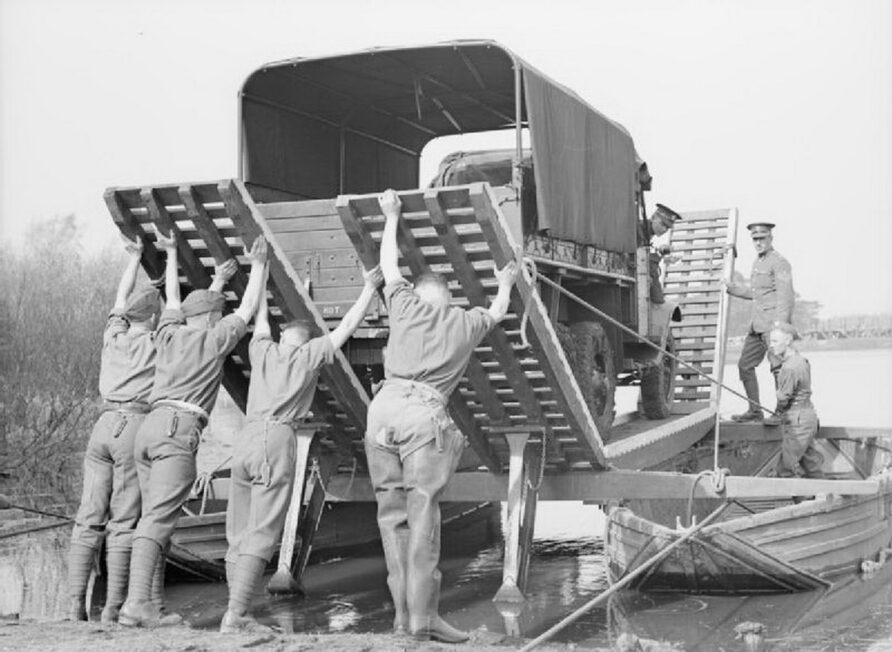
The best way of visualising this configuration is that the vehicle would drive onto the raft with the boat’s bow and stern in parallel with the vehicle’s long axis.
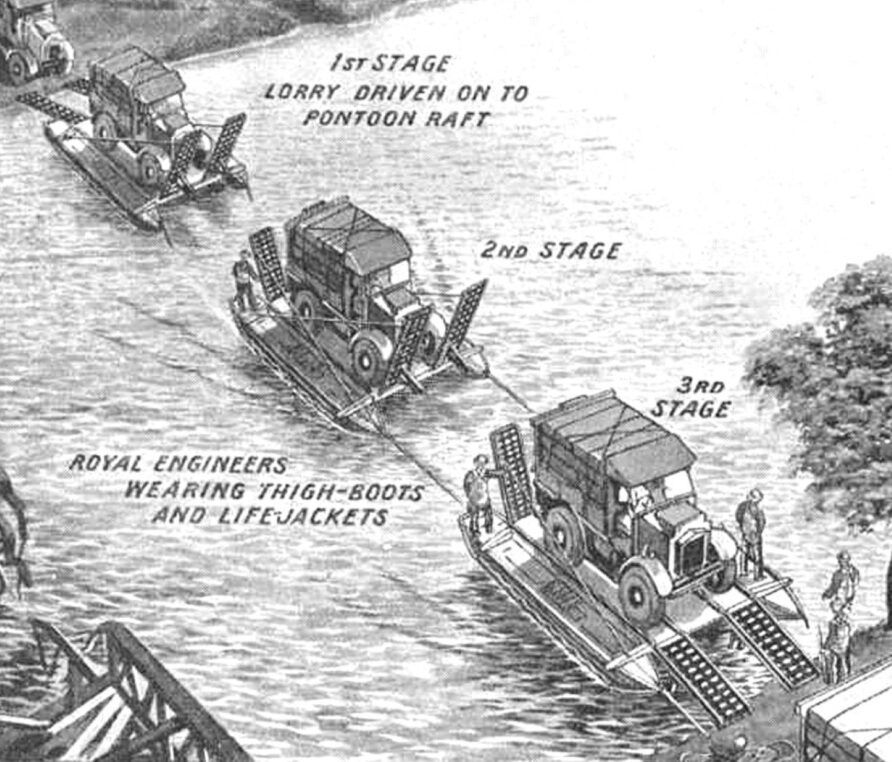
The video below shows a tracked raft in use.
Decked Raft
The Decked Raft increased the carrying capacity to 4.5 tons.
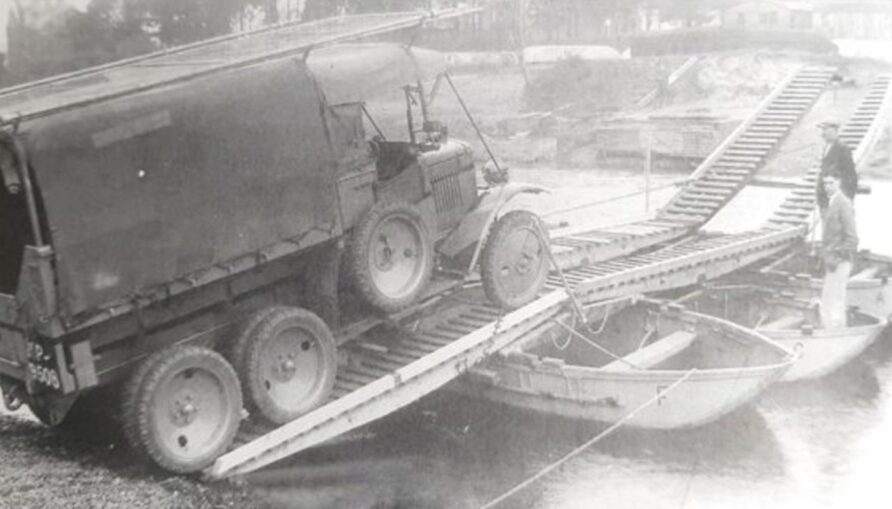
Instead of the vehicle deck being parallel to the long axis of the boats, the transom, and deck were placed perpendicular to it, again, using two boats.
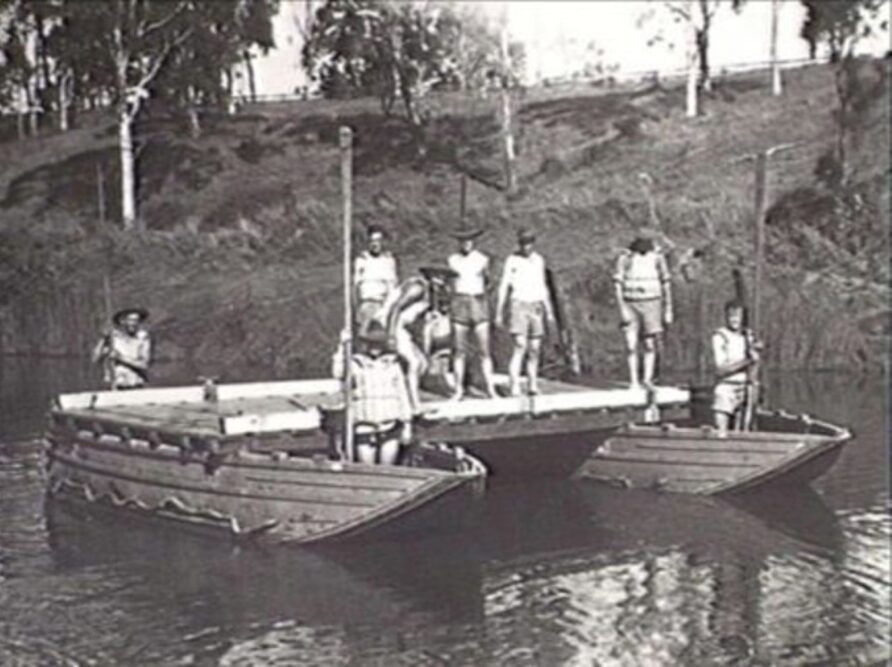
Although it had a higher load capacity, the Decked Raft configuration was less flexible and more difficult to handle, requiring a landing stage that comprised another boat and landing ramp on both banks.
The tracked raft could use multiple landing spots without requiring any work, although preparation and groundwork would often take considerable time if heavy traffic was to be expected.
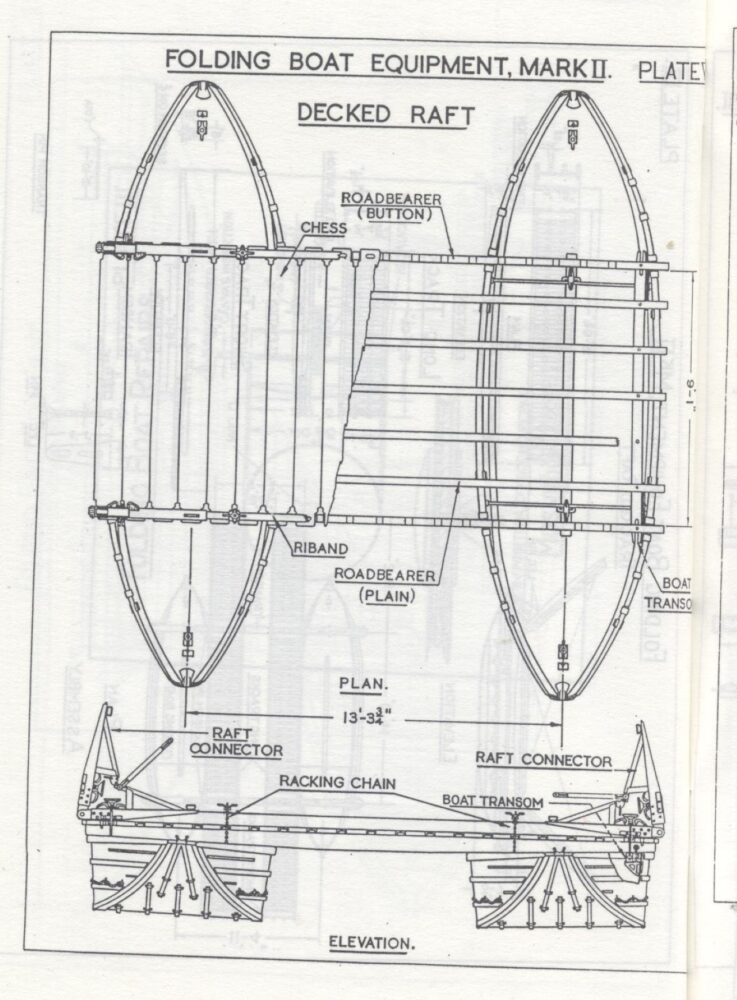
In the mid-thirties, the Folding Boat Equipment Mark II was introduced, although the difference between it and the Mark I were minimal, making the road bearers slightly wider and replacing timber ribands with steel, for example.
The decked raft capacity rose from 4.5 tons to 5.2 tons, but it’s Class 5 rating remained.
An inflatable Reconnaissance Boat Mark I completed the general set, alongside various tools and ancillary items.
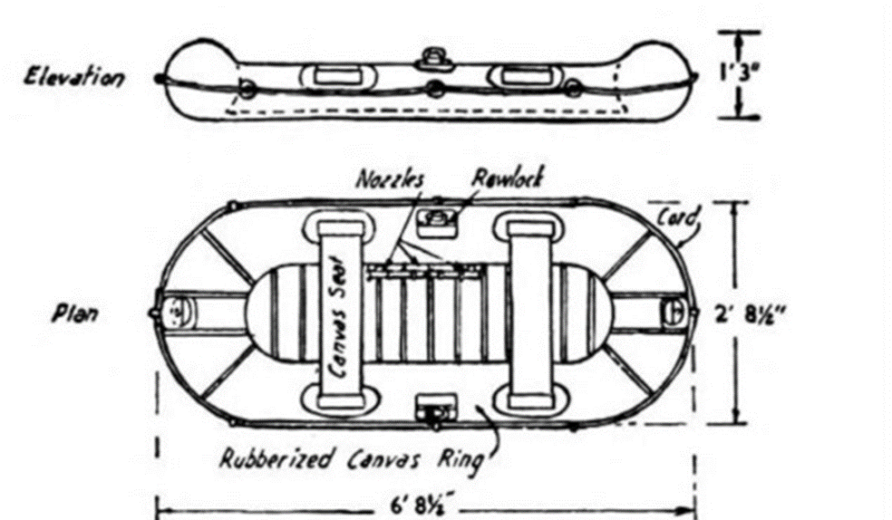
Before reading on, would you mind if I brought this to your attention?
Think Defence is a hobby, a serious hobby, but a hobby nonetheless. I have removed those annoying adverts, but hosting fees, software subscriptions and other services add up.
To help me keep the show on the road, I ask that you support the site in any way you can. It is hugely appreciated.
You can click on an affiliate link, Buy Me a Coffee at https://ko-fi.com/thinkdefence, download an e-book at https://payhip.com/thinkdefence or even get some TD merch at https://www.redbubble.com/people/source360/
Youtubers, if you are going to lift content from here, the decent thing to do would credit me
Folding Boat Equipment (FBE) Mark III
The Royal Engineers started the twenties with the Kapok Infantry Assault Bridge, Folding Boat Equipment, the Consuta Pontoon Equipment, Large Box Girder Bridge and Small Box Girder Bridge either in service or about to be.
The next decade would see a rapid transition from peacetime experimentation to re-armament, and ultimately, to war.
The Mobile Division (that would ultimately become the 1st Armoured Division) stated a requirement for a lightweight Class 9 floating bridge that could also be utilised as a ferry or raft.
The Military Load Classification was by then established and allowed easy classification of vehicles and bridges, and Class 9 included a fully laden 3.5-ton truck and a 25 Pounder artillery gun with a tractor.
Of the options examined, improving Folding Boat Equipment (FBE) Mark II was the most practical.
The Mark III boat was improved, although the same basic concept remained, because of new fittings for the roadway, the Mark II and Mark III boat were not interchangeable.
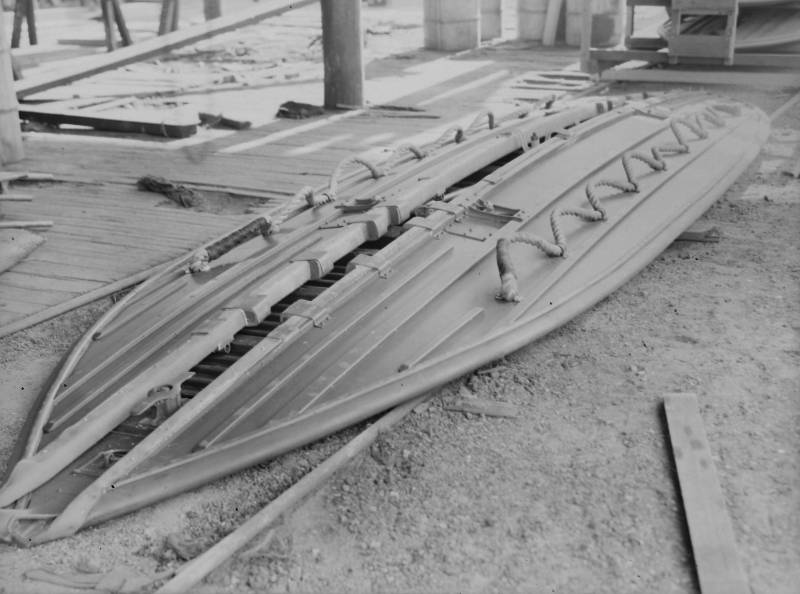
The most significant change was in the new steel road bearers and trestle.
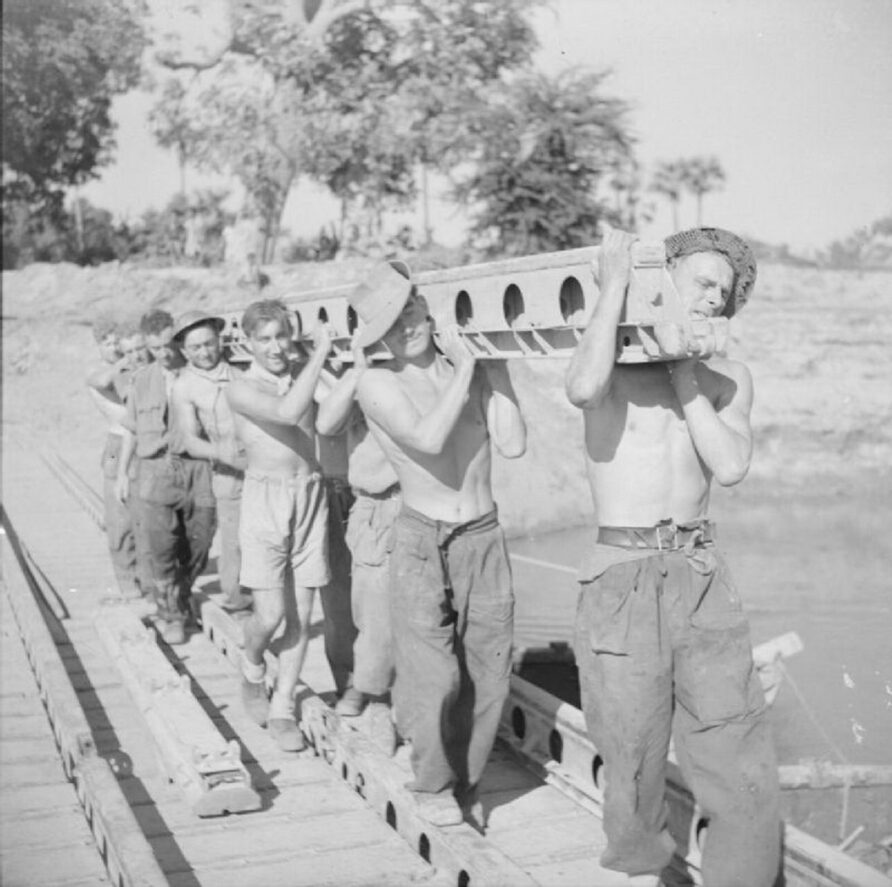
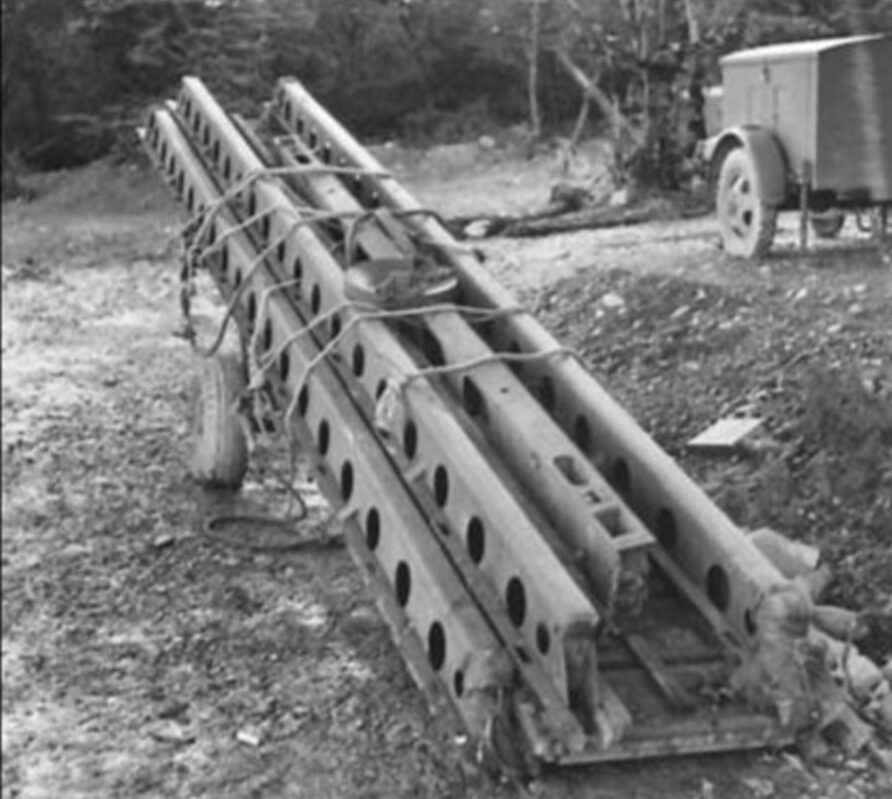
By limiting the articulation of the floating bays, the buoyancy provided by multiple boats acting as one could be exploited to improve load carry capacity.
As can be seen from the diagram below, only the half-floating bay was allowed to articulate to accommodate the rise and fall of the river.
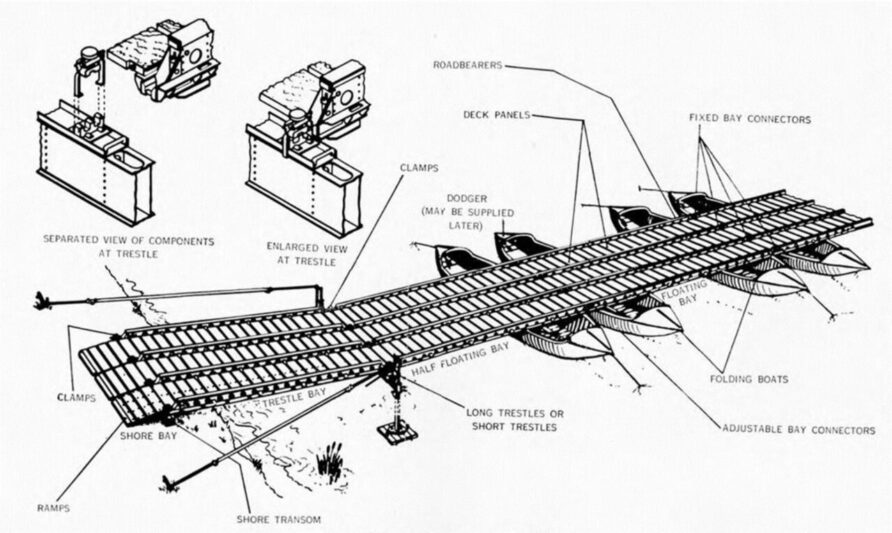
The Trestle bay was fixed in position and secured using a newly designed Folding Boat Equipment (FBE) Mark III trestle, and a shore bay and ramps, resting on the shore transom provided the bank/bridge interface point.
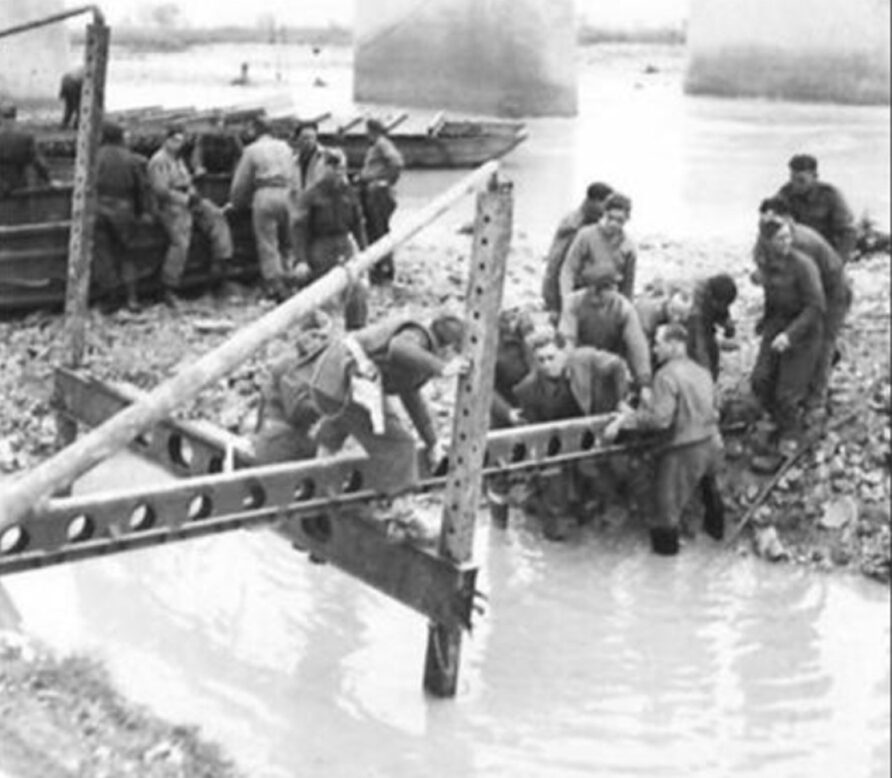
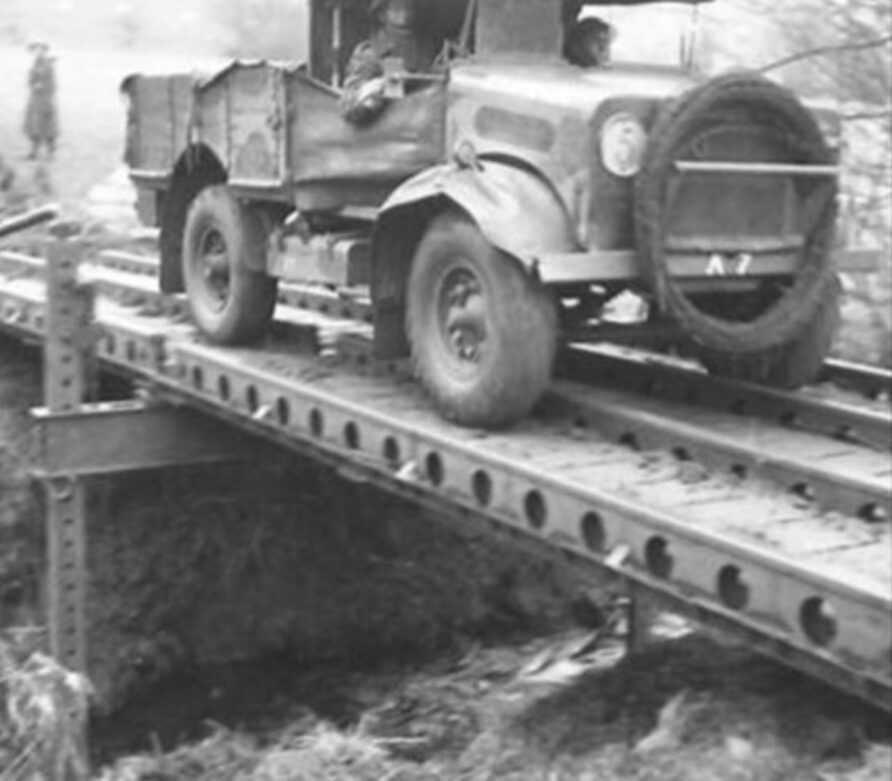
A standard Folding Boat Equipment (FBE) Mark III Set could be used in various configurations as shown below.
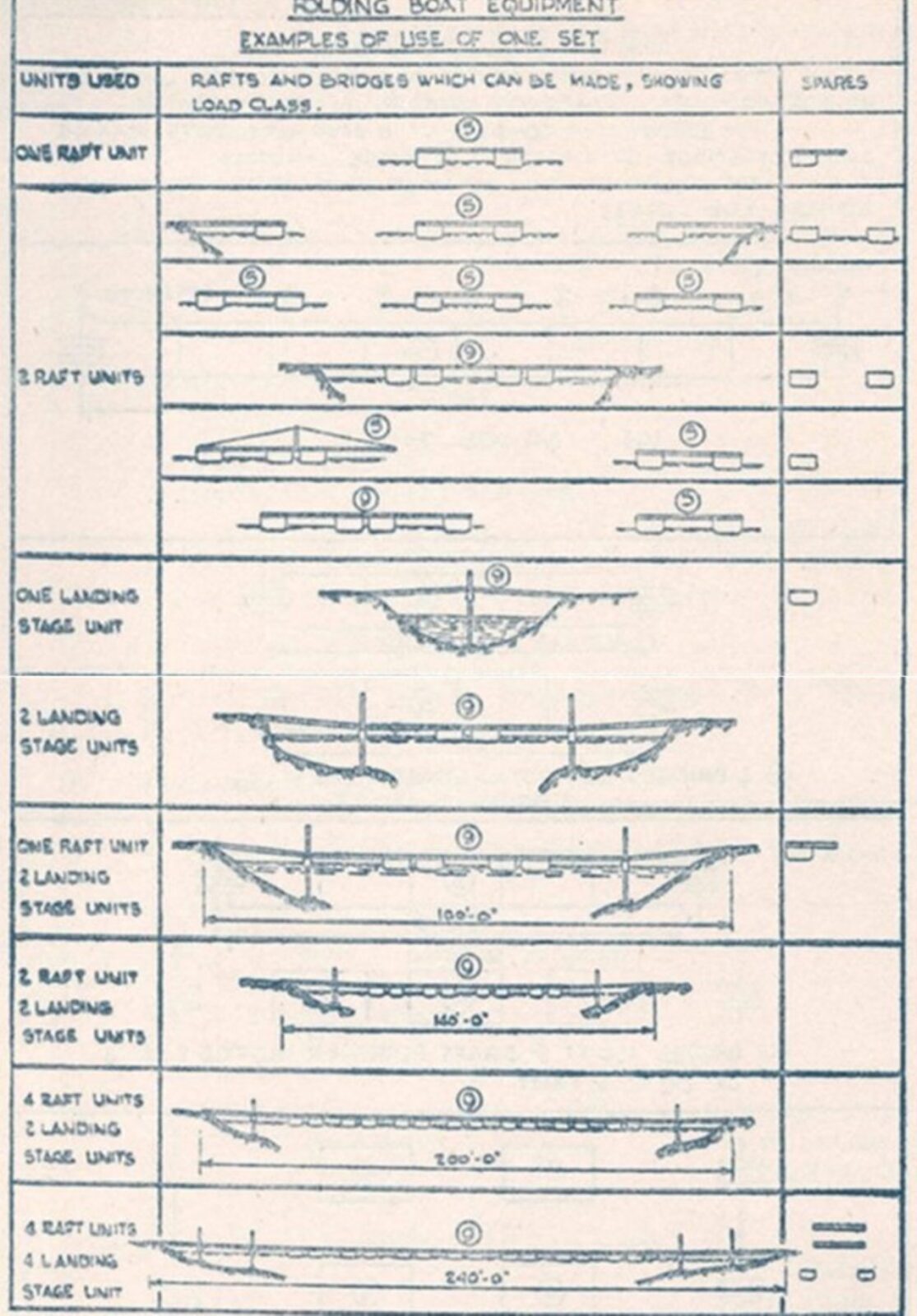
In addition to a floating bridge, Folding Boat Equipment (FBE) Mk III was also commonly used to create rafts and ferries.
Folding Boat Equipment (FBE) Mark III Rafts and Ferries
Decked Raft Class 5
This was simple to build and operate but needed landing stages on both banks.
It was a single floating bay of two boats and a standard 19-foot 6-inch length of roadway and so it could later be incorporated into a bridge. The landing stage was usually a half-floating bay of one boat and a standard roadway length resting on a shore transom at the shore end.
More elaborate landing bays using trestles could be erected if necessary.
The decked raft could be operated as a ferry with cables strung across the water obstacle. Power could be outboard motors, winches, or paddles.
A Class 5 raft could carry 6 pdr anti-tank guns, carriers and 15cwt trucks. Vehicles could simply drive forward onto the raft and drive forward off at the other side. This was not true of all rafts.
The components required for the raft were
- 2 X boat
- 4 X road bearer
- 15 X decking panels
- 4 X raft connector.
Decked Raft Class 9
This was the same as for Decked Raft Class 5 but used two bays. Being Class 9 it could carry a loaded 3-ton lorry.
Shore Loading Decked Raft Class 5
This was a single-bay-decked raft but with a half-floating bay attached.
The outer end of the half-floating bay was fastened to a shore transom which rested on the bank when loading and unloading. If the banks were a suitable height the shore loading raft could be used without landing stages and could thus come into action more quickly.
A further advantage was that the raft could be free ranging and be rapidly changed from one crossing point to another. A disadvantage was that the raft had to turn around in midstream to allow the half-floating bay to be brought against the far bank. This in turn meant that vehicles had to reverse onto the raft.
The components required for the raft were
- 3 X boat
- 8 X road bearer
- 30 X decking panels
- 2 X raft connector.
- 1 X shore transom
Shore Loading Decked Raft Class 9
This consisted of two Class 5 Shore Loading Rafts with the two half bays on the outside. This could carry 3ton lorries. Having a half bay at each end meant that turning in midstream and reversing onto the raft was not necessary.
Ferries
Any of the decked rafts could be used as a ferry.
In that case, a line was taken across the river by the dinghy or a folding boat and fastened to holdfasts on each bank.
A ferry set consisted of:
- 1 × cable drum with 100 fathoms of 1” cable.
- 2 × 113-fathom coils of 2” Manila hawser.
- 2 × 2” double blocks
- 2 × 1” snatch blocks
- 4 × earth holdfast anchors.
The raft can then be powered by whatever means is available.
Oars and propulsion units were not suitable because of a lack of space but outboard motors and winches could be used.
If necessary the raft could be powered by men hauling on the cable.
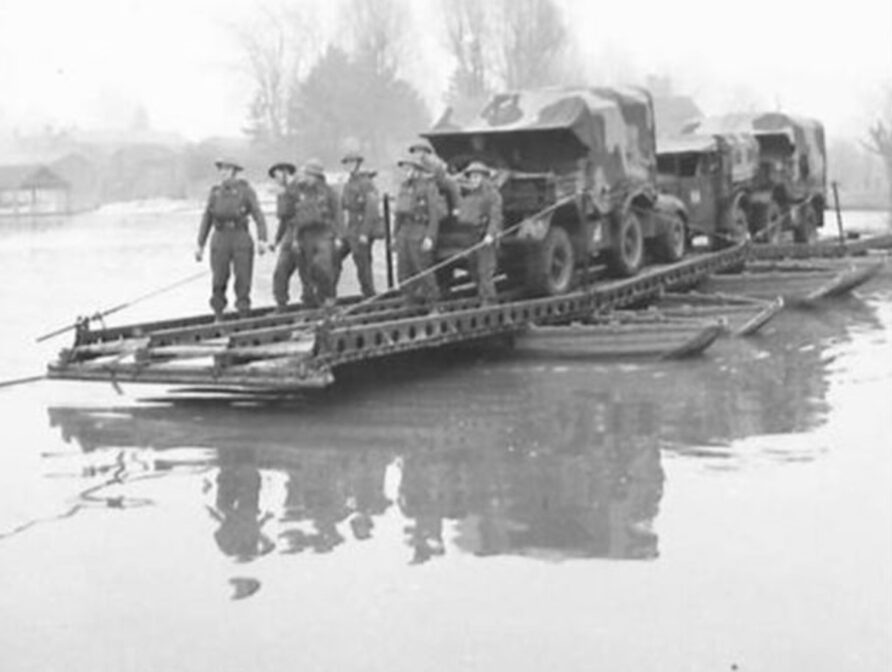
Build Sequence
The build sequence was largely the same as the Mark I and II
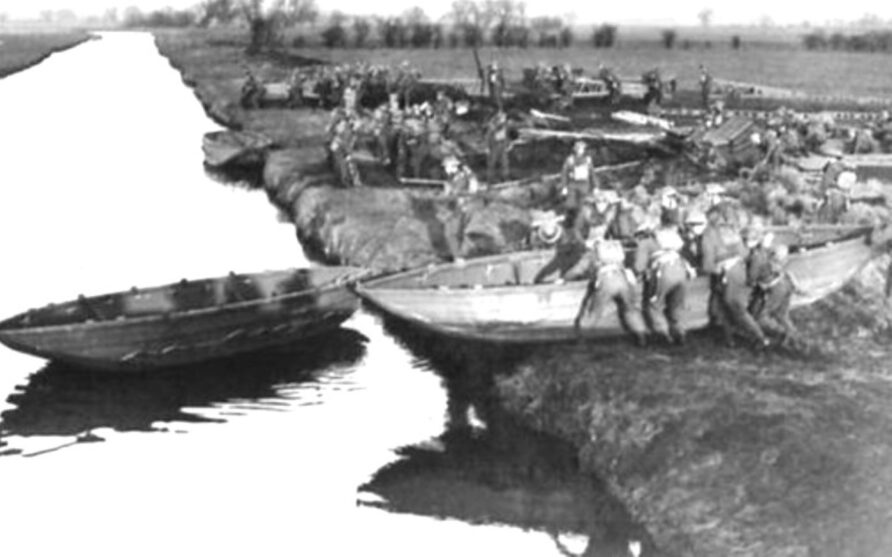
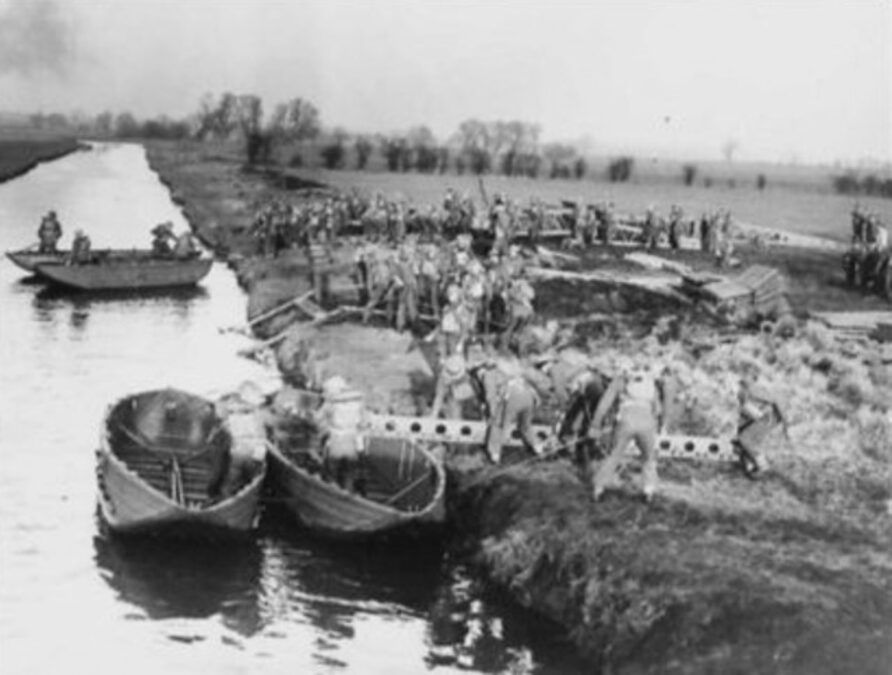
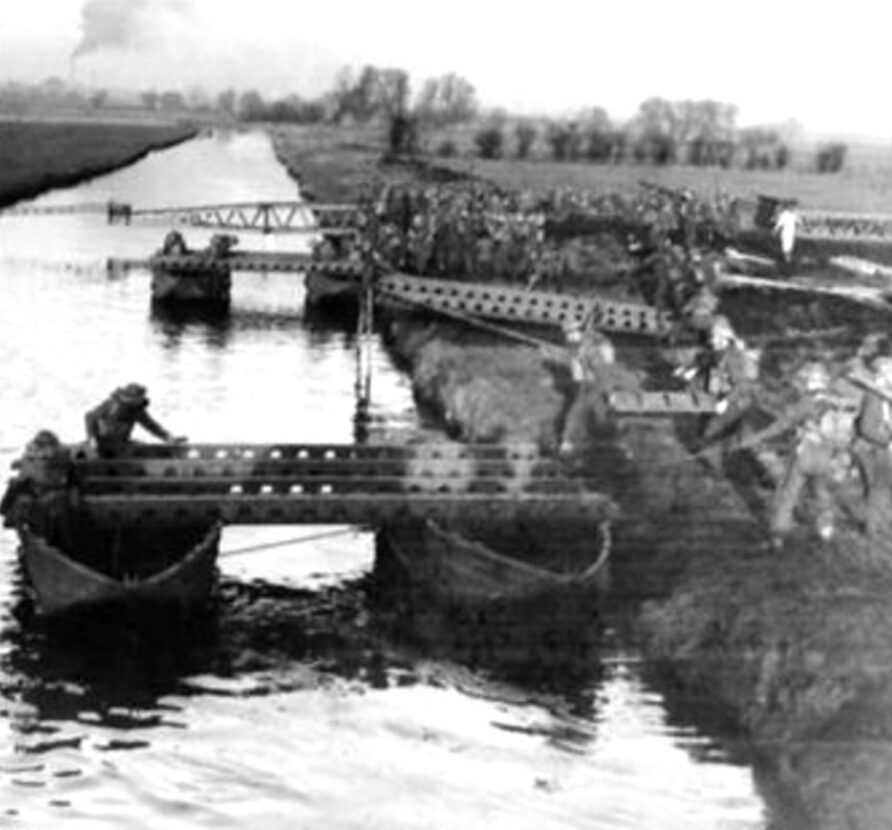
The video below shows some Folding Boat Equipment (FBE) builds in progress
Folding Boat Equipment (FBE) Transport
Folding Boat Equipment (FBE) was a flexible design, with various configurations built from a basic kit of parts
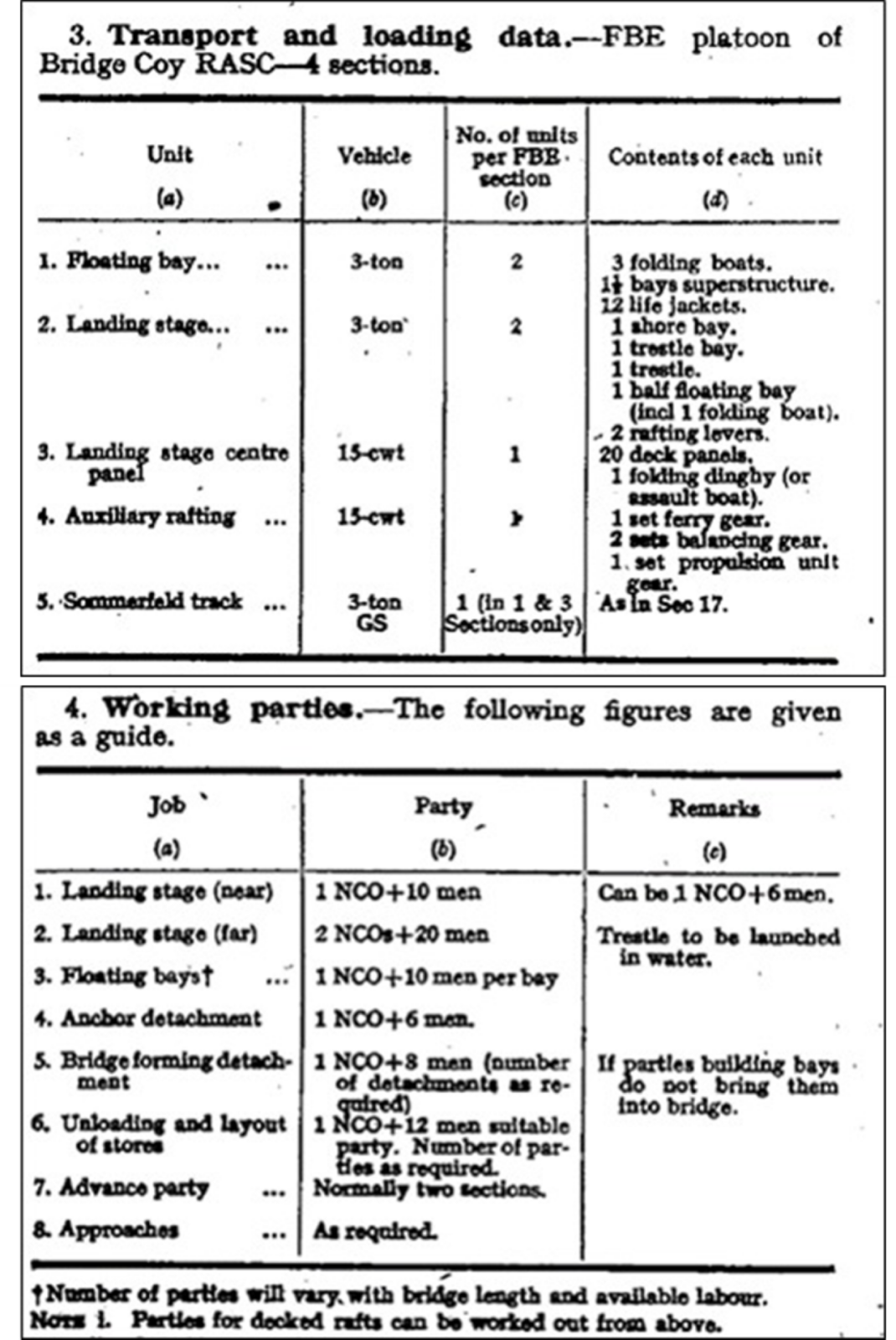
Storage efficiency was greatly improved because they could be folded, Folding Boat Equipment (FBE) was typically carried by a specially modified Albion BY5 truck, each able to carry three in a folded state.
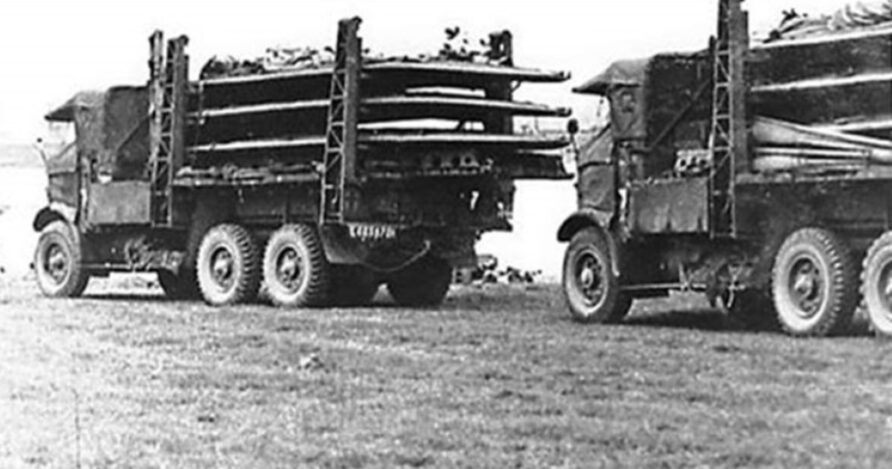
Several trailers were also used
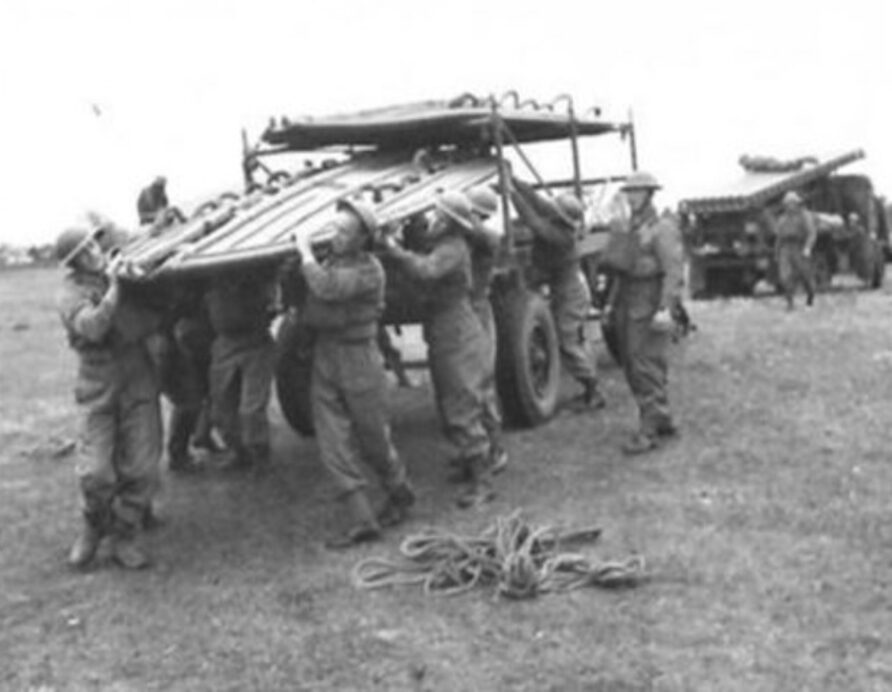
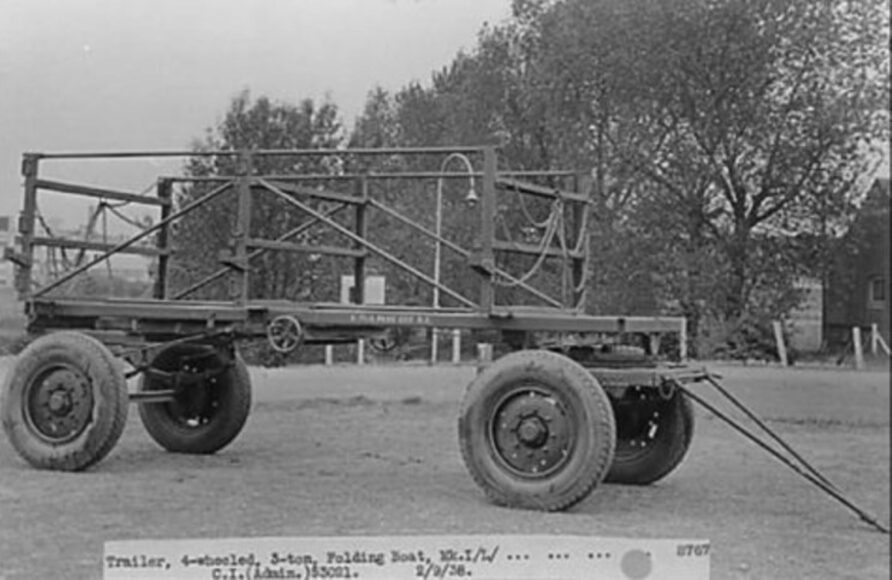
Folding Boat Equipment (FBE) on Operations
Although not strictly operations, worth noting that Folding Boat Equipment (FBE) was used in response to the 1937 Fenland floods, and a decade later, same place, the same equipment.
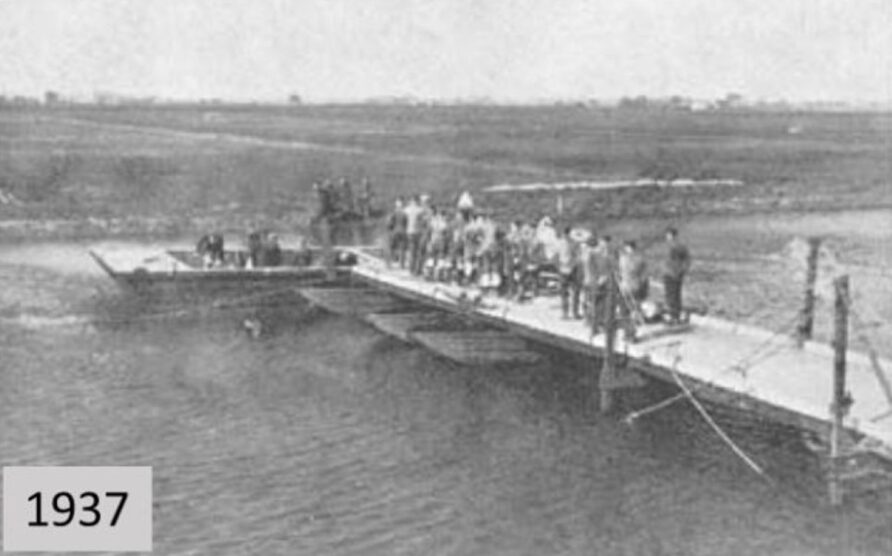
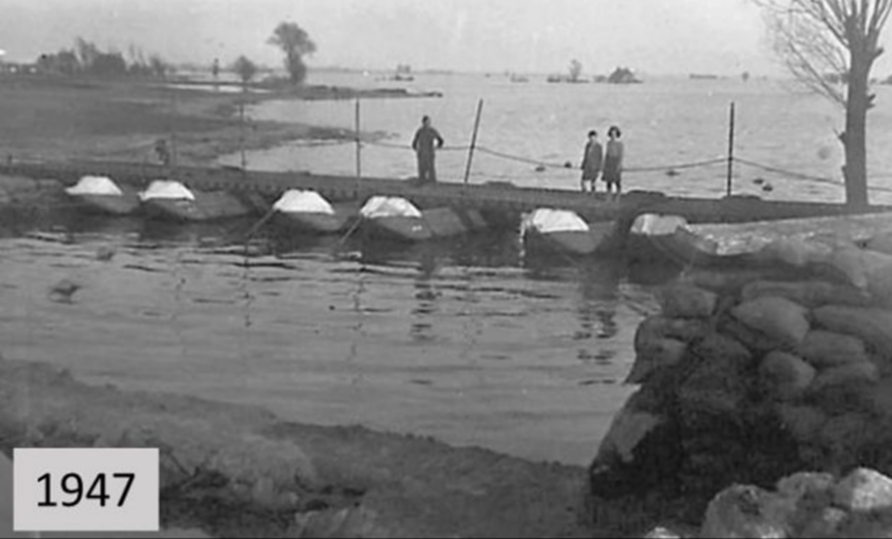
The images below show an FBE MkIII used at Medjez el Bab in Tunisia, the site of which would become well known as the first operational deployment of the then-new Bailey Bridge.
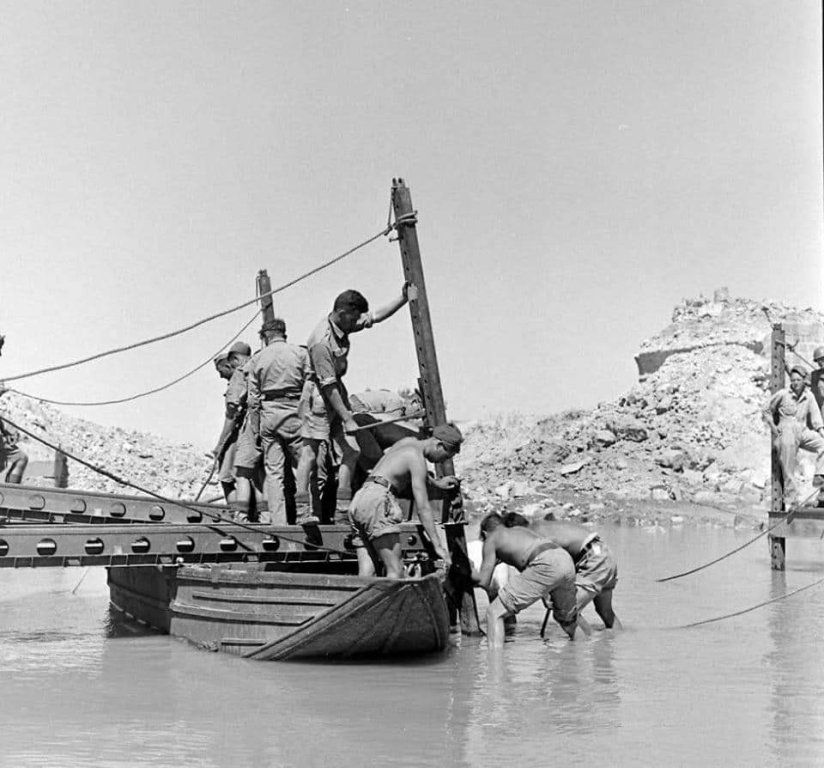
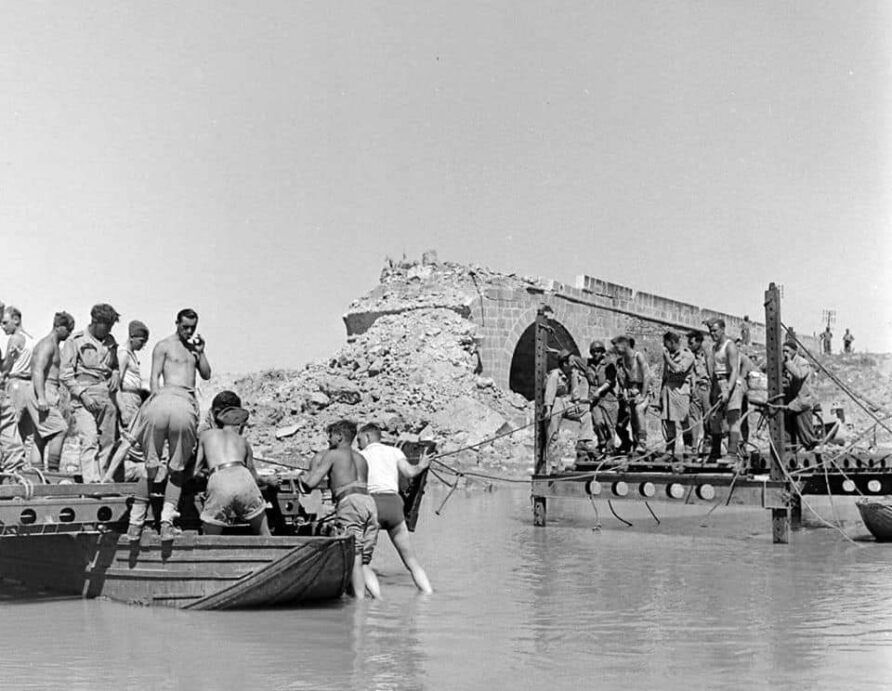
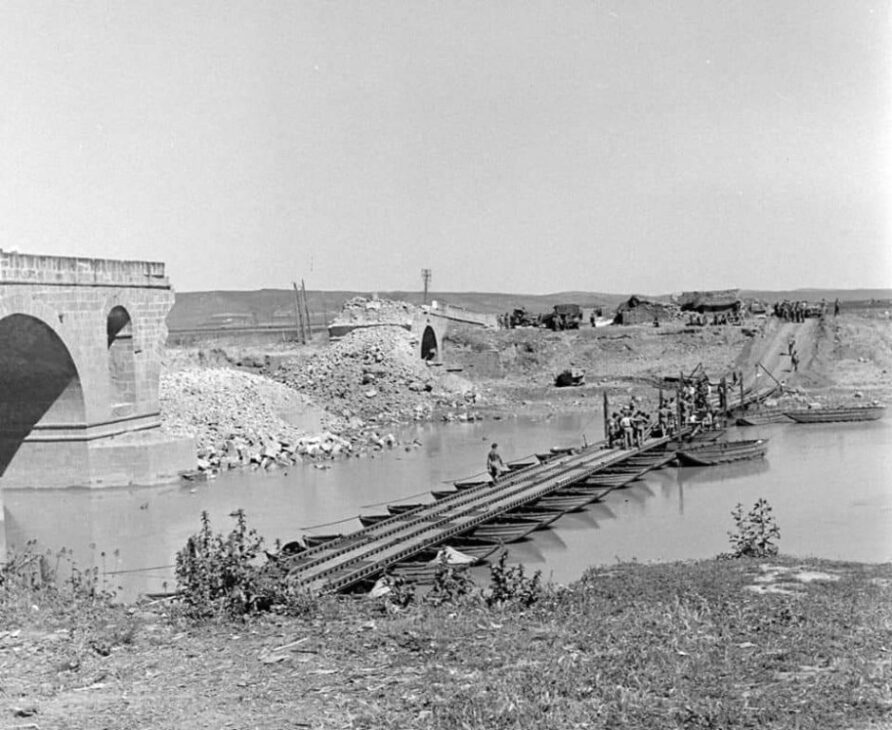
Following D-Day, the Folding Boat Equipment (FBE) would see extensive service with Allied forces.
Once the situation around Caen had stabilised and the tremendous battles in that area were brought to a conclusion, the allies were ready to advance on the Seine.
Maintaining the speed of advance was critical and to support this, a number of specially trained and equipped bridging columns were formed.
The British 21st Army Group was to cross at Vernon and the 30th Corps Armoured Divisions push onwards towards the Somme, Brussels, and Antwerp. Vernon had two bridges, one rail and one road, but these were both destroyed by allied bombing.
The rail bridge was less damaged than the road bridge, the latter of which was attacked by two sorties of 73 and 26 B26 bombers, dropping nearly 200 tonnes of bombs and resulting in significant loss of civilian life.
The 43rd Wessex Infantry Division had for a couple of years prior been practising assault river crossings and was the obvious choice to spearhead the crossing. On the 25th of August 1944 lead elements of the division including the Middlesex Regiment and 15/19th Hussars arrived at Vernon.
Despite being invited to liberation banquets they proceeded to establish their positions quietly overlooking the crossing point, ably assisted by the French Resistance. Targets were located with the assistance of the town inhabitants, remarkably, the German defenders on the far bank suspected nothing.
The crossing, however, was not to be as easy.
5th Battalion Wiltshire Regiment was first across in assault boats, but only one boat survived, but as the battle raged into the night a small bridgehead was established.
Reportedly, a solitary RE officer stripped down to a duffle coat and socks to pilot the assault boat that transferred small numbers of soldiers across, a DUKW was also used to transfer personnel.
The assault boats were also manned by detachments of 583 Field Company RE. The 4th Battalion The Somerset Light Infantry and 1st Battalion the Worcestershire Regiment also took part in assault crossing at other locations.
During the night, the destroyed bridge was used by a few personnel to cross the river, in a single file.
Once the far bank had been secured, the bridging plan called for two bridges to be completed, a Class 9 FBE and two Class 40, Pontoon Bailey’s. During the night some pontoons were put in place but despite heroic efforts to complete the Class 9 Bridge the following day, enemy fire prevented it.
However, as the fighting on the far bank progressed it did allow the first bridge to be completed by early evening.
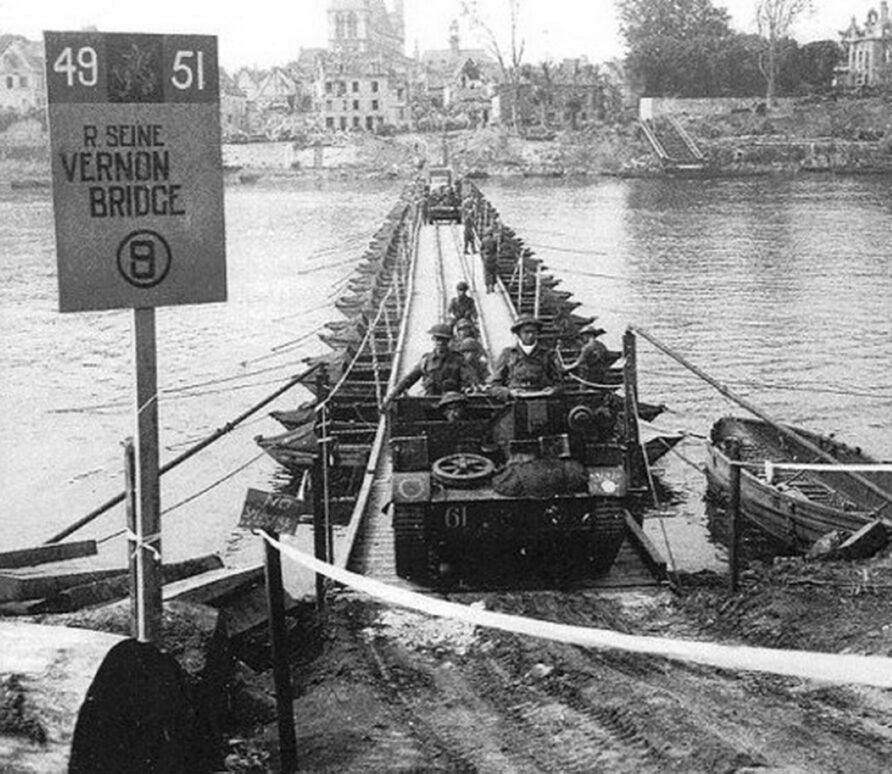
By the morning of the 26th, there were three battalions firmly established on the far banks in the suburb of Vernonnet and a Class 9 Folding Boat Equipment (FBE) bridge established, the first across being a number of anti-tank guns.
The two bridges were now in place, called David (Class 9 FBE Mark III) and Goliath (Class 40 Floating Bailey)
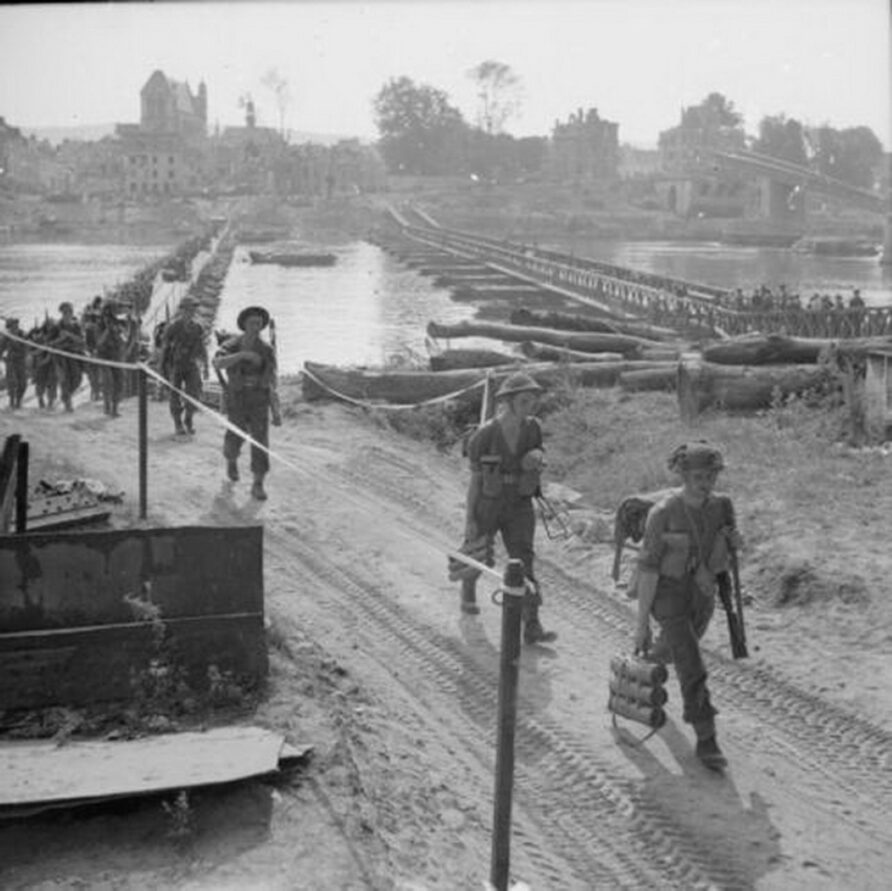
From the Giverny.org website
British lost 600 men in 4 days, Germans 1600 men. 12 Resistance fighters were killed, adding to the 107 civilian dead during the last four months. The city had to be rebuilt, what would not be done before 1949. But this victory was crucial. It made it possible for the allied troops to go on with their march upon the East. Montgomery crossed the Seine in Vernon on September 1st, 1944. A street of Vernon is named after him, it is one of the numerous testimonies of gratefulness from the inhabitants of the city for their Liberators. Military corners in the cemeteries as well as many memorial stones in Vernon and its surroundings still recall to those who offered their lives to liberate our region.
The Worcestershire Regiment website has an excellent and detailed 14-part account of the crossing at Vernon, click here to read, with some footage in the video below
A second Class 40 Bailey Pontoon Bridge was established further downstream and was called SAUL.
The Worcestershire Regiment website details a reunion that took place in 1992, well worth a read, click here.
There are often other Royal Engineer-supported events at Vernon, celebrating and remembering the crossing. The Vernon memorial reads
ON THE 25TH AUGUST 1944, THE 43RD (WESSEX) DIVISION LIBERATED VERNON AND CROSSED THE RIVER SEINE UNDER THE FIRE OF THE GERMAN UNITS DUG IN ON THE PROMINENT HILLS OF THE EASTERN BANK. THE INFANTRY SUPPORTED BY 4 ARMOURED REGIMENTS FOUGHT DURING 3 DAYS TO REPULSE THE ENEMY. THE CROSSING WAS ACHIEVED BY THE USE OF 3 FLOATING BRIDGES BUILT BY THE ROYAL ENGINEERS. FROM THIS INITIAL BRIDGEHEAD THE 30TH CORPS LED THE ADVANCE TOWARDS BELGIUM. THE BRITISH TROOPS SUFFERED 550 CASUALTIES IN THIS OPERATION.
Once the Seine had been crossed, the 21st Army Group set about the business of securing the Channel ports and putting a stop to the V rocket launch sites.
Read more (affiliate link)
After the failure of Market Garden, consequent operations sought to secure the Meuse as part of the preparation for the Rhine crossing and although a planned assault across the river was not carried out due to US forces capturing Venlo on the opposite bank to British forces, a 400ft long Folding Boat Equipment (FBE) bridge was built at Venlo by 100 (R.Mon) Fd Coy.
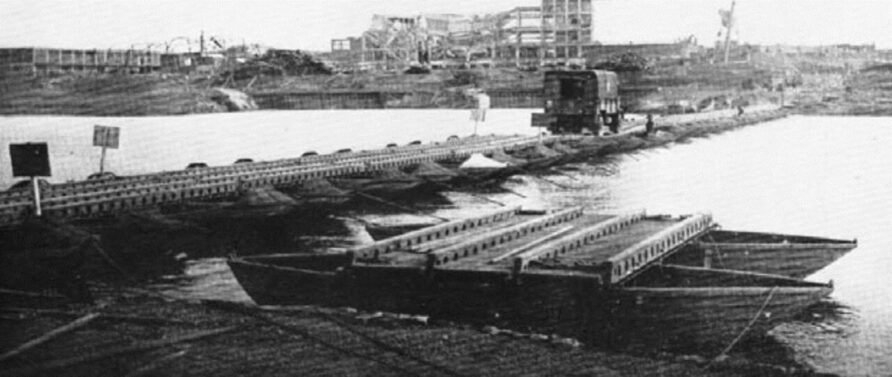
There is some contradiction in accounts over which was the first British bridge over the Rhine, ‘Waterloo’ at Rees, or ‘Draghunt’ at Wardt.
The ‘Waterloo Bridge’ at Honnepel was, 1300ft (0.4 km) long, built by 18th GHQ Tps, from the 0800 hours on the 25th of March 1945 to 0200 hours on the 26th
The plan also included the provision of a Class 9 F.B.E. Bridge, Waterloo. This task was allotted to 18th G.H.Q. Tps. The site for this bridge was originally chosen between London and Westminster bridges, and it was to be built at the same time as Lambeth. As it was impossible to make a start on this owing to the opposition in Rees, it was eventually decided to build this bridge round the bend, downstream. In spite of the delay, it was the first bridge to be completed
In addition to the two trestle bays, a total of 60 floating bays were needed.
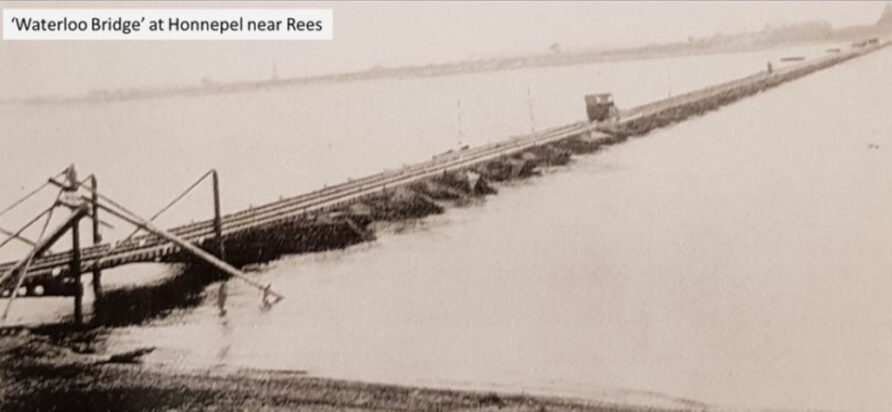
However, the ‘Draghunt’ bridge at Wardt seems to have got there a day before
The site for the Class 9 bridge was chosen with the least suitable approaches of the three, since the value of the bridge was in its quick construction to take the first rush of light vehicles. Also it was easier to make up the approaches for light traffic than for heavy. It was to be a very temporary bridge. The C.R.E. called for his bridging vehicles at 06.00 hrs. One serial of sixty vehicles was sent down but could not advance from Wardt owing to heavy enemy fire. The first vehicle reached the river at 13.00 hrs. and from then on bridging and construction of 1,000 yds of approaches continued uninterrupted. In ten hours the bridge, 1,320 ft. of it, and the approaches were complete-a fine performance. Traffic flowed immediately but the exit roads were not all cleared of the enemy and diversion of traffic on the far bank was necessary. This caused delays and in the dark at 02.00 hrs. on the 25th March a jam of traffic at one end of the bridge broke it, twenty-two bays were half sunk and displaced downstream. The re-construction was more difficult than the original construction, but the bridge was reopened by 13.00 hrs. on 25th March
At 1,440 feet (0.44 km), this was the longer of the two and construction was aided by RAF balloon winches but, as above, was broken twice. The first was due to excess weight caused by congestion, and the second was because strong winds created waves that overtopped the dodgers fitted to the bow and stern of the boats.
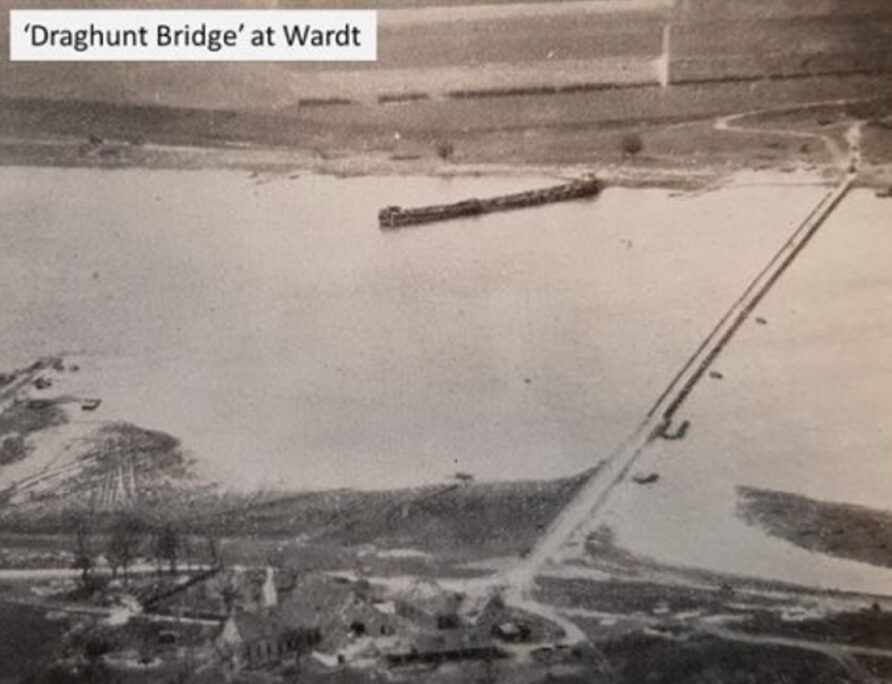
Pushing North, a number of Folding Boat Equipment (FBE) bridges were built over the Dortmund-Eser canal, the Weser and Elbe. The final Folding Boat Equipment (FBE) in the European theatre was built over the Elbe at Artlenburg, and despite enemy resistance having faded considerably, VIII Corps Troops Engineers lost 8 killed and 21 injured during the build.
The Italian campaign, although on a smaller scale to North-West Europe is interesting because it was longer and for simple reasons of geography meant spans were generally longer. Because British and Commonwealth forces operated on the left flank, rivers were closer to the sea and therefore usually wider than those encountered in North-West Europe.
The retreating German forces also did an excellent job of destroying bridge infrastructure as they went, not just dropping spans but also destroying piers and approaches.
Folding Boat Equipment (FBE) was used during the Italy campaign although less so than Bailey.
Although Folding Boat Equipment (FBE) was used to cross the Bifurno and Volturno, the first significant multi-crossing use of FBE was over the River Sangro.
Two Folding Boat Equipment (FBE) sites were built, Site 4 being an FBE bridge for foot and mule traffic, and Site 5, an unusual bridge that consisted of multiple Trestle Bays with a Bailey in the middle channel, completed in early December 1943.
The winter offensive of 1944, especially the crossing of the Garigliano by the Fifth Army in January provides two of the few colour images of Folding Boat Equipment, built by 213 Field Coy on the 19th of January 1944, the first bridge across.
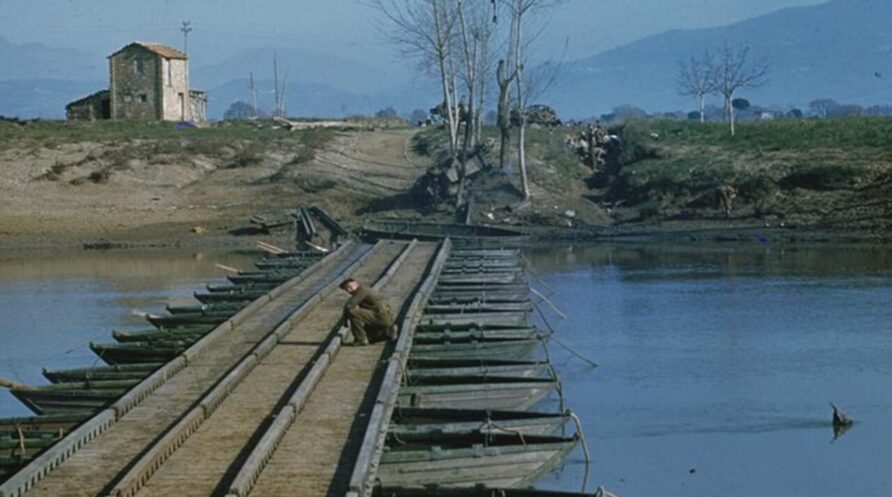
FBE was used many times in the drive north through Italy
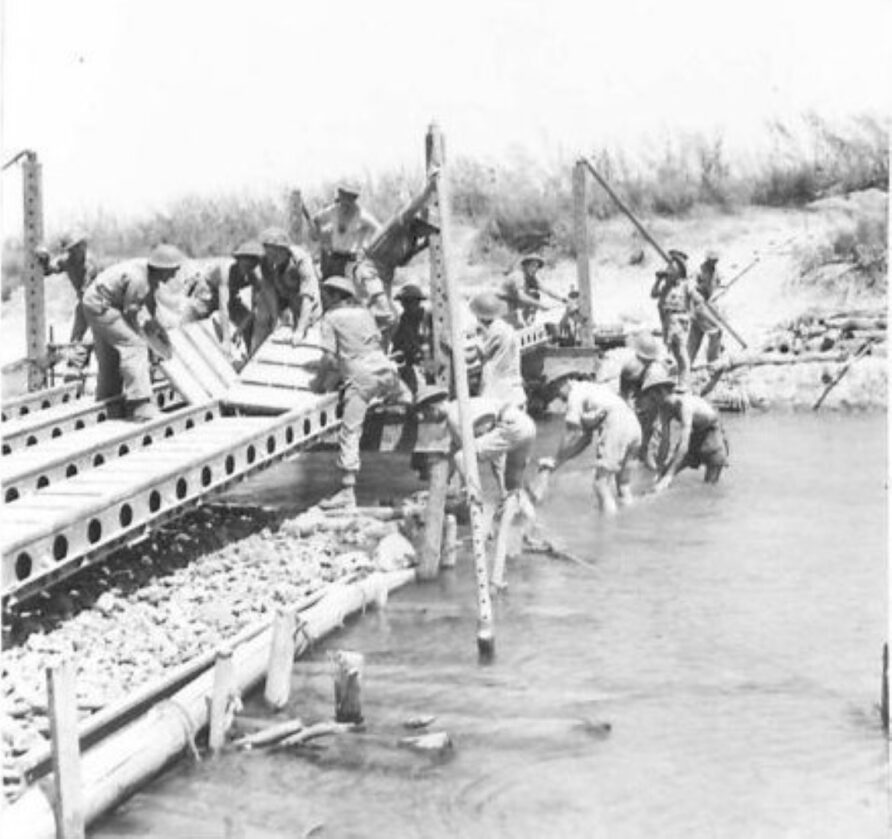
In Burma, crossing the Irrawaddy was an essential part of the plan to defeat the Japanese forces. ‘vitamin B’ was the code word given to the crossing.
By the end of the first day, a combination of assault boats, Bailey rafts from C Beach and Folding Boat Equipment (FBE) rafts from B Beach had allowed a significant force to land on the opposite banks to achieve a complete tactical surprise.
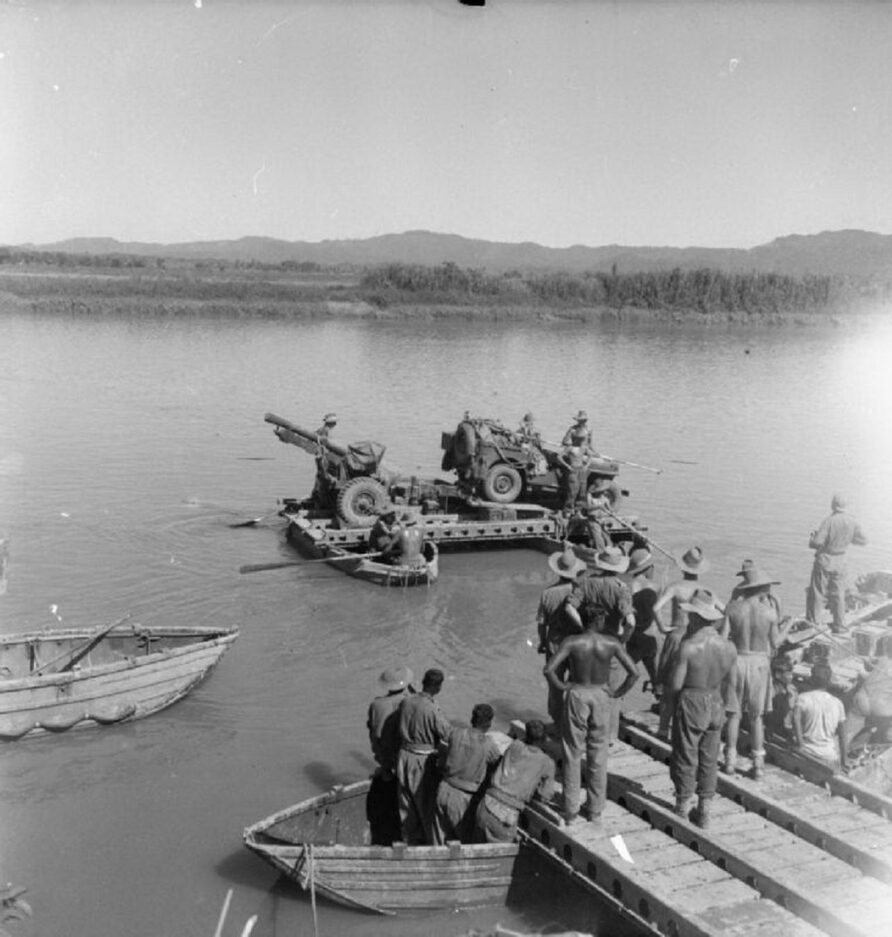
Within a week, over a thousand vehicles had been rafted across the river.
From D +8 onwards the ferry became a humdrum affair, still with a large output, but traffic never reached dimensions which taxed its capacity. Anything up to 400 sorties a day were completed, but this was mere child’s play and unit commanders took the opportunity to train their clerks, storemen, and batmen in the arts of watermanship.
Folding Boat Equipment went out of service in the post-war period, but that it remained largely unchanged throughout WWII was a testament to its qualities.
A US Army comparison study concluded…

Change Status
| Date | Change |
| 23/01/2021 | Initial issue |
| 23/07/2021 | Additional Imagery |
| 04/11/2022 | Minor format change |
| 03/08/2023 | Update on Class III rafts |
SOURCES
Institution of Royal Engineers Journals (various issues)
Royal Engineers Reconnaissance Pocket Book 1944
One More River to Cross, J.H.Joiner
E-in-C’s ( India) Pamphlet No 10 (1943) Notes on the Organization of that Part of the Corps of Indian Engineers
Engineers in the Italian Campaign
Royal Engineers Battlefield Tour — Normandy to the Seine
Royal Engineers Battlefield Tour — The Seine to the Rhine
Bridging — Normandy to Berlin
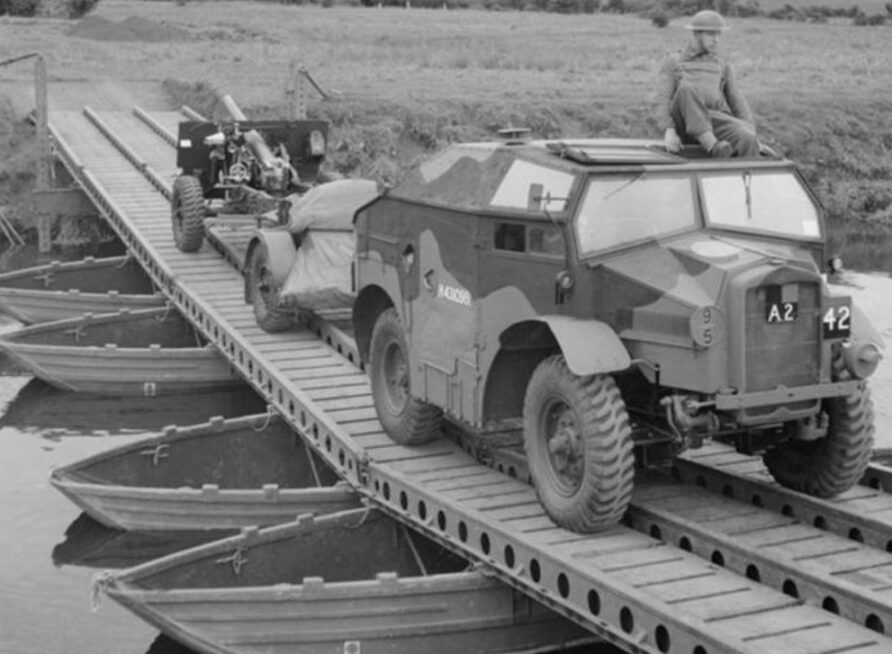


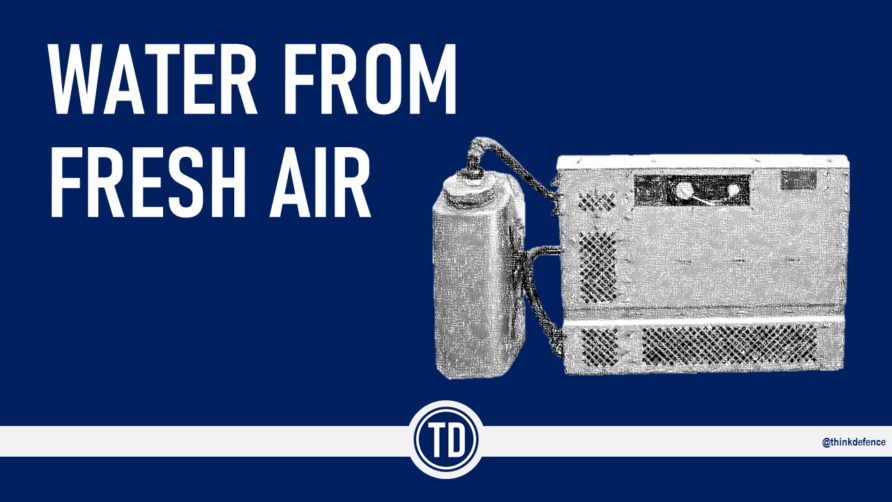
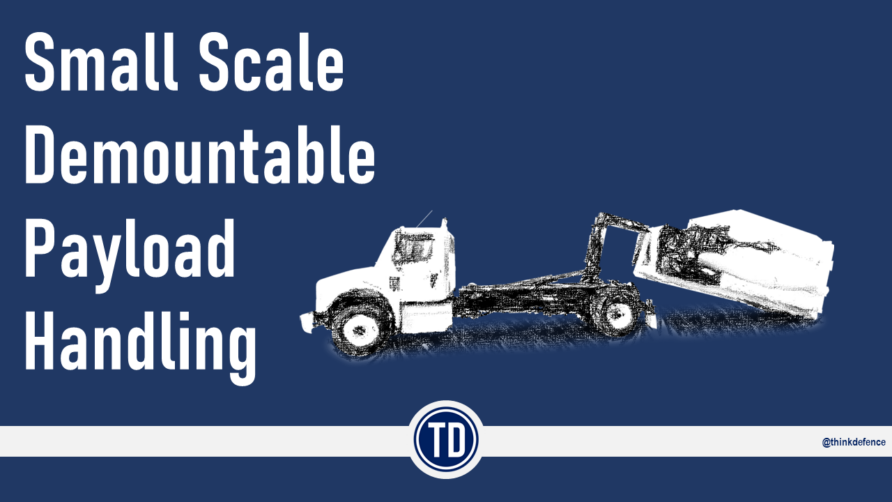
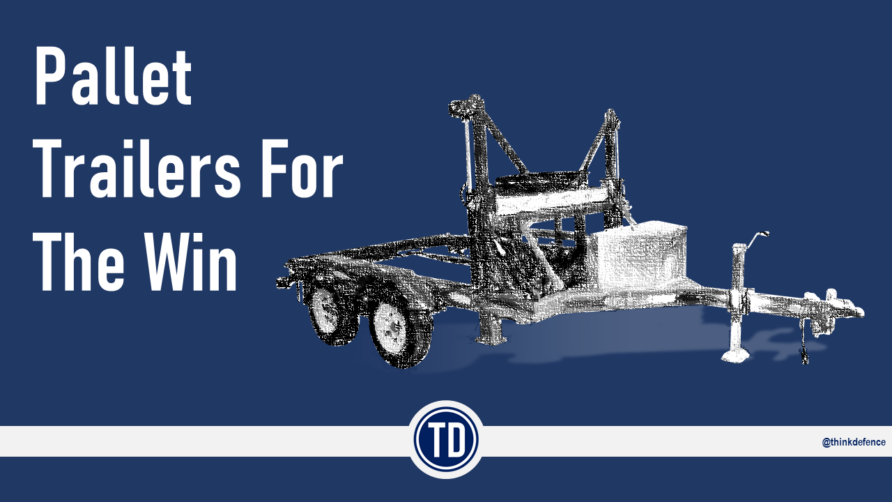
A fascinating study. Hats off to the engineers who created and used it. It looks like Britain was ahead of the rest of the world in this field, did the Axis have anything similar?
Fascinating, thank you for some very substantive research.
‘Folboats’! IRRC some were used in some of the raids into Occupied Europe. Haven’t read the whole thread yet